Wilding Out: A WildStorm Reading Guide
Earlier on, I wrote about my torrid love affair with the eternally underrated Wildstorm imprint, as the former Image house found a new home at DC Comics and quickly became one of the most impressive producers of superhero storytelling in the entire medium. I went on and on about that, so I don’t need to expand here. Want to see me wax ecstatic about Wildstorm? Go to there, you must.
However, you may have read that article or simply been interested in Wildstorm before but always wondered, “What should I read that showcases how great this line was?” That’s what this article is all about, as I wanted to provided a limited but personalized Wildstorm reading guide that showcases the titles I love from the history of that imprint. It doesn’t cover everything, nor is this article designed to be my takes on the best comics the publisher ever made. It’s not even really about my favorites. Instead, it’s just a guide through some of the titles that made the line special for this reader, highlighting a mix of ten comics that should be accessible in some manner via print or digital means. Consider it a starter pack more than anything.
Before we jump into my picks, though, I wanted to make a few notes. Because Wildstorm as an imprint published not just the core line of books, but creator-owned projects and houses within houses like Cliffhanger and America’s Best Comics, I wanted to limit myself on how many non-main universe stories I could highlight here. As much fondness as I have for Cliffhanger or some of the creator-owned titles they rolled out into the world, I was mostly looking at Wildstorm proper here. So I limited myself to a max of two non-continuity stories, with only one being allowed to be an obvious pick. Keep that in mind as you go through this list!
Also, I didn’t want to only favor one era. While I’d argue that the strongest period for Wildstorm as a whole was basically 1999 to 2005, exclusively focusing on that period would be a disservice to this imprint’s 27 year history. So I tried to work in picks from even the quieter periods for Wildstorm as well. But that’s it for caveats! To the reading guide!
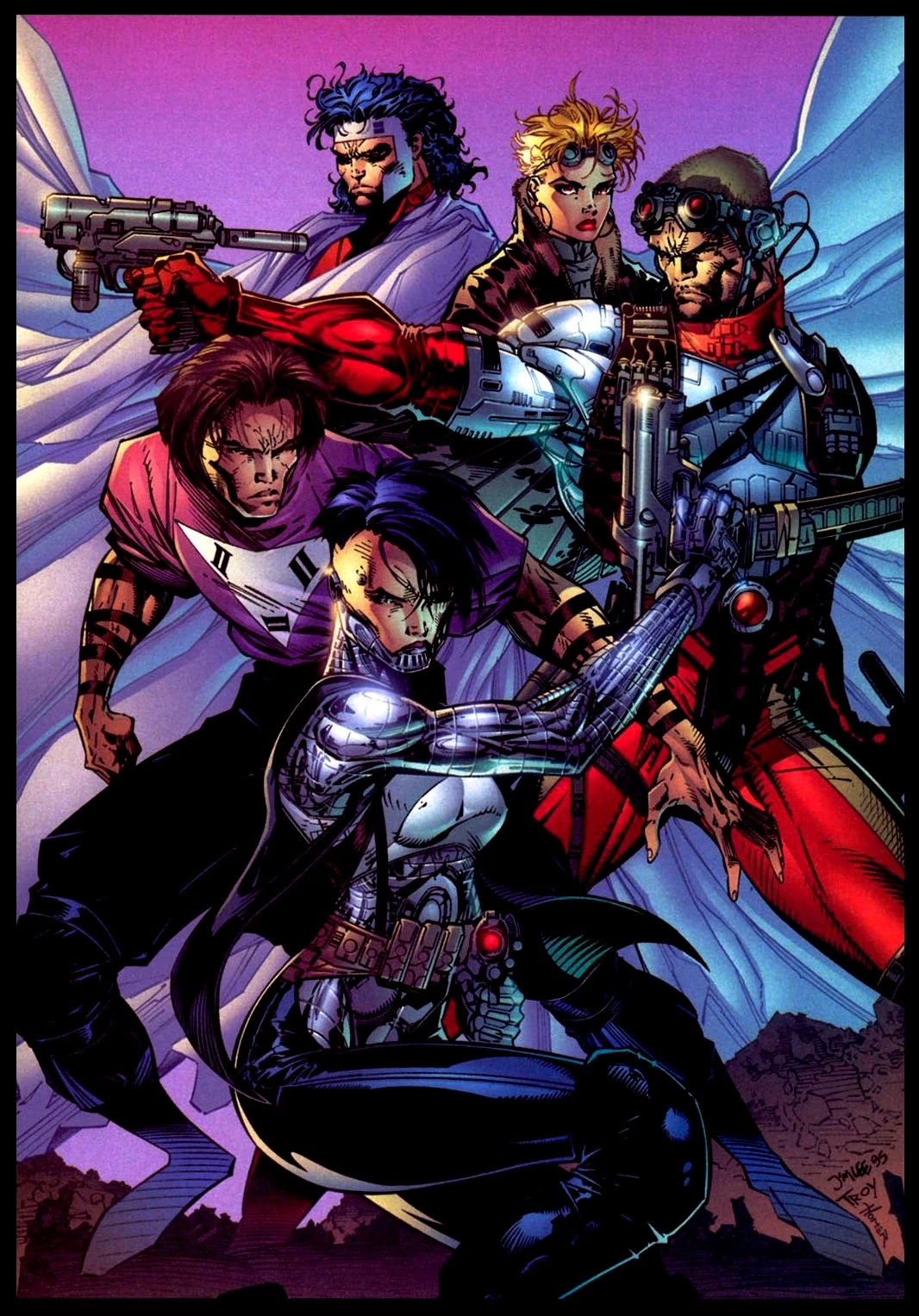
WildC.A.T.s
Let’s get the obvious out of the way: the early stuff is both overwritten and very, very obviously a X-Men variant that Jim Lee and Brandon Choi were doing. There’s still merit there, because that Jim Lee art is still hot fire at times. And while the James Robinson parts are solid enough, it’s really when Alan Moore enters the picture where WildC.A.T.s turns it up to eleven. That’s issue #21, as Moore is on the book from issues #21 to #34 and it immediately becomes something different, and something much more special.
Moore expands the cast, bringing in a slew of new characters, most notably T.A.O. – or Tactically Augmented Organism 1 – and Ladytron, two characters that were immediately A+ additions. Building the team around those characters, the pair of Savant and Mr. Majestic and others made for an immediately more interesting series, as they felt fresh in a way some of the original group didn’t. 2 But the original group wasn’t left behind, as the team that was thought to be dead – besides Grifter, who had quit – was off on the world where their roots began: Khera. This return added emotional complexity to their lives and the story, as Moore explored a question few superhero stories ever ask of themselves, and that’s “What if the reason you were fighting is no longer a thing?” It was a fascinating twist, and one that led to societal and personal questions that developed the cast in real ways.
It’s also less deliberately titillating, with Moore growing the book up a bit in some ways. It helps a lot that he had some outrageous artists to work with, most notably Travis Charest, an artist whose last name actually means “art god” in French. 3 That’s one commonality from WildC.A.T.s as a series. It’s always been an elite art book, as beyond Lee and Charest, other names that worked on some variation of the WildC.A.T.s series included Dustin Nguyen and Sean Phillips, with Dave Johnson providing inks and colors for a small portion of the first volume. 4
The writing was the part that was really hit or miss, but if you really want to read some good WildC.A.T.s comics, I suggest sticking to that Moore run – naturally – and Joe Casey’s work on the second and third volumes. Not only does Casey’s run ensure you largely stick to art by Phillips and Nguyen, Casey is also a perfect fit for the franchise. The guy kills it throughout, as his inventiveness is on display through and through here, particularly in WildCATs 3.0, a volume that really sells the corporate superheroics element of the book and does it with style.
One bonus WildC.A.T.s note: don’t skip WildC.A.T.s/Aliens, the one-shot crossover between Jim Lee’s superhero team and Ridley Scott’s Xenomorphs. It sounds stupid on the surface, but it is not. Written by Warren Ellis, drawn by Chris Sprouse with Kevin Nowlan inks, and colored by Laura Martin, that comic isn’t just great, it’s important, as it’s the lead-in to the very next series I’m going to write about. More on this book later on at SKTCHD, though, as I’m working on a special project about it.
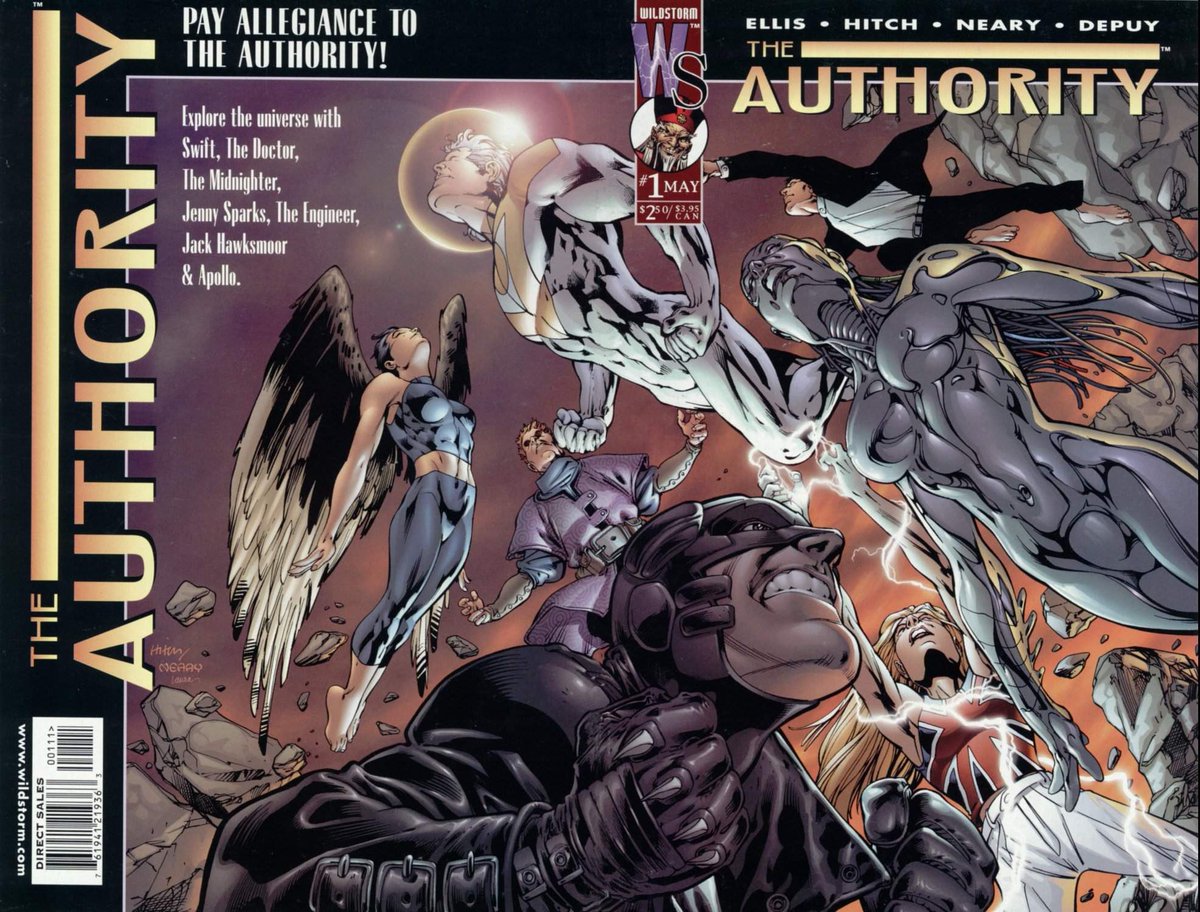
The Authority
You are probably well aware of the greatness of The Authority. The first 12 issue story from Warren Ellis and Bryan Hitch that tells the tale of a new superhero team that does its own thing in the wake of the destruction of Stormwatch was both an endlessly entertaining comic – it was perhaps the most broadly appealing story of each of those creator’s careers, and yes, I know that means I am putting it ahead of Nextwave and The Ultimates 5 – and something of a game changer for the way superhero comics were told. It effectively introduced 6 the rather influential idea of “widescreen comics,” with Ellis and Hitch delivering a story with wider panels and bigger shots designed to bring that blockbuster experience to life.
It was also just flat out amazing, as Ellis and Hitch straight up cooked with this cast of characters that were part newly created for the series and part remnants of Stormwatch after that team’s unfortunate demise in WildC.A.T.s/Aliens. While all of the cast was great, Jenny Sparks and Midnighter are two quintessential Ellis characters, with both being players who seem to know the game better than anyone else does while being perfect deliverers of the writer’s trademark incisive wit. This comic is always good; it’s great when those two get involved.
And Hitch is outrageous on this book, as the scope and scale he accomplishes throughout is beyond compare. I mean, just the shots of The Carrier surfing through The Bleed are enough by themselves but Hitch endlessly impresses on the title. Speaking of art: while the second stint of 12 issues is nowhere near as well liked as the first, the greatness of Frank Quitely on it is undeniable. I’ve had some people tell me that those issues are better looking even if they aren’t as well-written by Mark Millar. I’d have a hard time arguing with that, even if I prefer the Ellis/Hitch stuff overall.

Planetary
The sister book to The Authority is really only its twin in the sense that it a) was written by the same person and b) launched the same month. Besides that, they are effectively nothing alike. While The Authority was effectively a straight superhero story – a big ideas one, but a straight superhero story all the same – Planetary was effectively a tour of the history of genre fiction, largely visiting superhero related stories but also touching on pulp heroes, kaiju, aliens and basically everything you can think of over its 27 issue run from Warren Ellis, John Cassaday and Laura Martin. It was effectively the highbrow mirror image of The Authority, digging into the roots of story instead of perfecting a specific form.
If you polled the average comic fan, I’d wager that Planetary is the one with the larger impact between it and The Authority. I would largely agree with that, as it’s arguably a better comic and one that was more inventive overall. I’m also generally a bigger fan of Cassaday than Hitch, and when you pair him with Martin, the visuals were off the charts good.
The weirdest part of this story that explored the lives of the Archaeologists of the Impossible is it’s hard for me to separate what it is from its release schedule. Planetary’s 27 issues took more than a decade to get through due to Ellis falling ill and Cassaday’s busy schedule. It took long enough that the original series editor – John Layman – went from that role to a successful writer in his own right during that span. The reading experience was…let’s say it was a bit all over the place because of that, as each new issue required a realignment of my brain to remember where we were coming from.
The good news is it’s complete now and the reading experience in the varying collections – I recommend the omnibus collecting the whole series – is divine. Some would argue this is the greatest comic Wildstorm ever produced. I would have a difficult time disagreeing if you wanted to make that case.

America’s Best Comics
Alan Moore is a rather notable figure from Wildstorm’s history, as the legendary writer both put together arguably the best run on the line’s flagship title but also created its most beloved imprint within an imprint in America’s Best Comics, or ABC. The comics in this line were all written by Moore, with artistic luminaries including Gene Ha & Zander Cannon, JH Williams III, Chris Sprouse and Kevin O’Neill defining the titles visually. Its quality is both uniform and undeniable. There’s not a bad title to be found here.
Here’s my favorite part about it, though.
Ask 100 ABC fans what their favorite title from the line was and I’d bet it’d be about as close to an even split as you could find. Between the four main comics – the procedural superhero book Top 10, the pulpy science hero adventures of Tom Strong, the super team from yesterday’s England in The League of Extraordinary Gentleman, 7 and the story of a college student-turned-apocalypse deity of a sort in Promethea – there’s arguably not a bad issue within their runs, all though your mileage may vary, taste wise.
While there might be a slight lean towards Promethea for JH Williams III reasons or LoEG because it’s the most famous book, I for one am a Top 10 guy. It’s one of my favorite titles ever, and one of the easiest comics to jump in an enjoy you can really ask for. It has one of the most poignant moments in comic book history within its pages, and the combination of Cannon’s layouts and Ha’s finishes are truly unbeatable. I love it, perhaps to an unhealthy degree.
But if you said you prefer one of the others, I wouldn’t argue. Choosing which ABC title is the best is like passing an unfailable test: there are no wrong answers here. Only greatness.
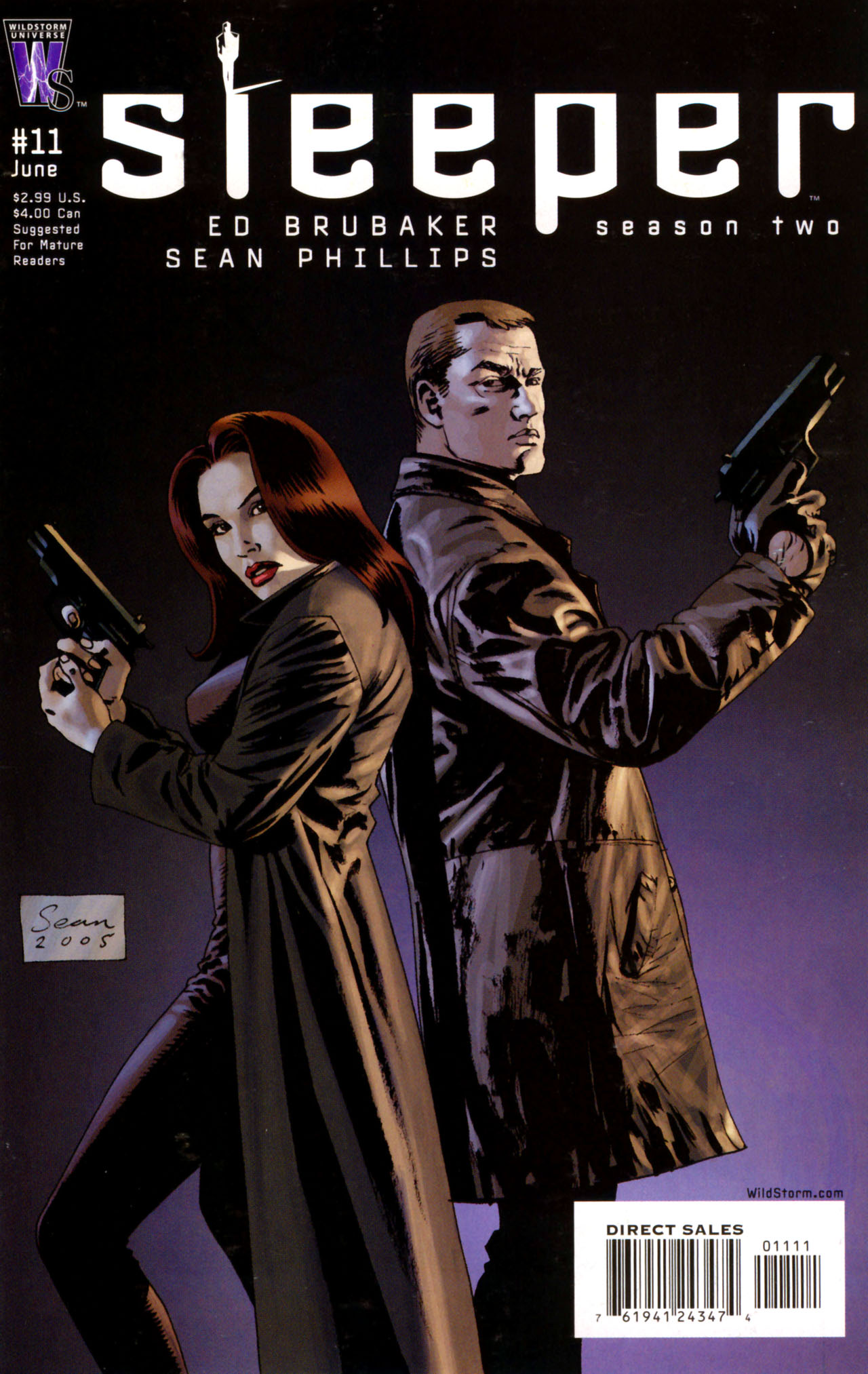
Sleeper
If Planetary is the best comic Wildstorm produced, then I’m going to spin it on you and say this: Sleeper is my favorite comic Wildstorm produced. So, if you haven’t read Sleeper, here is all you need to know. You know Ed Brubaker and Sean Phillips? You know how they’re incredibly good at making comics, particularly of a crime variety? Imagine they made a comic like Criminal but it had superpowers and featured Wildstorm shared universe characters like Grifter and John Lynch. Imagine they had an honestly unbeatable villain character in the aforementioned T.A.O., a character who runs the worldwide Illuminati in this comic at stunning, merciless levels of efficiency.
That’s Sleeper, a 24ish issue series over two volumes (and a single one-shot) that follows International Operations agent Holden Carver as he goes undercover in T.A.O.’s aforementioned global crime syndicate, only to see his single contact – John Lynch – to go into a coma after my guy Grifter shoots him. Basically, this undercover agent – or sleeper, if you will – has to basically keep his identity without losing who he is, while negotiating brutal tasks and even more brutal femme fatales.
I’ve probably read this entire series five or six times over the years because it’s so dang good. Just typing this out makes me want to read it again. In fact, I’m probably going to read this again tonight after I finish this article. It’s that good. Brubaker does Brubaker things. Phillips does Phillips things. That’s an unbeatable combination, and one unleashed on the Wildstorm universe. We were lucky to have them for a time.
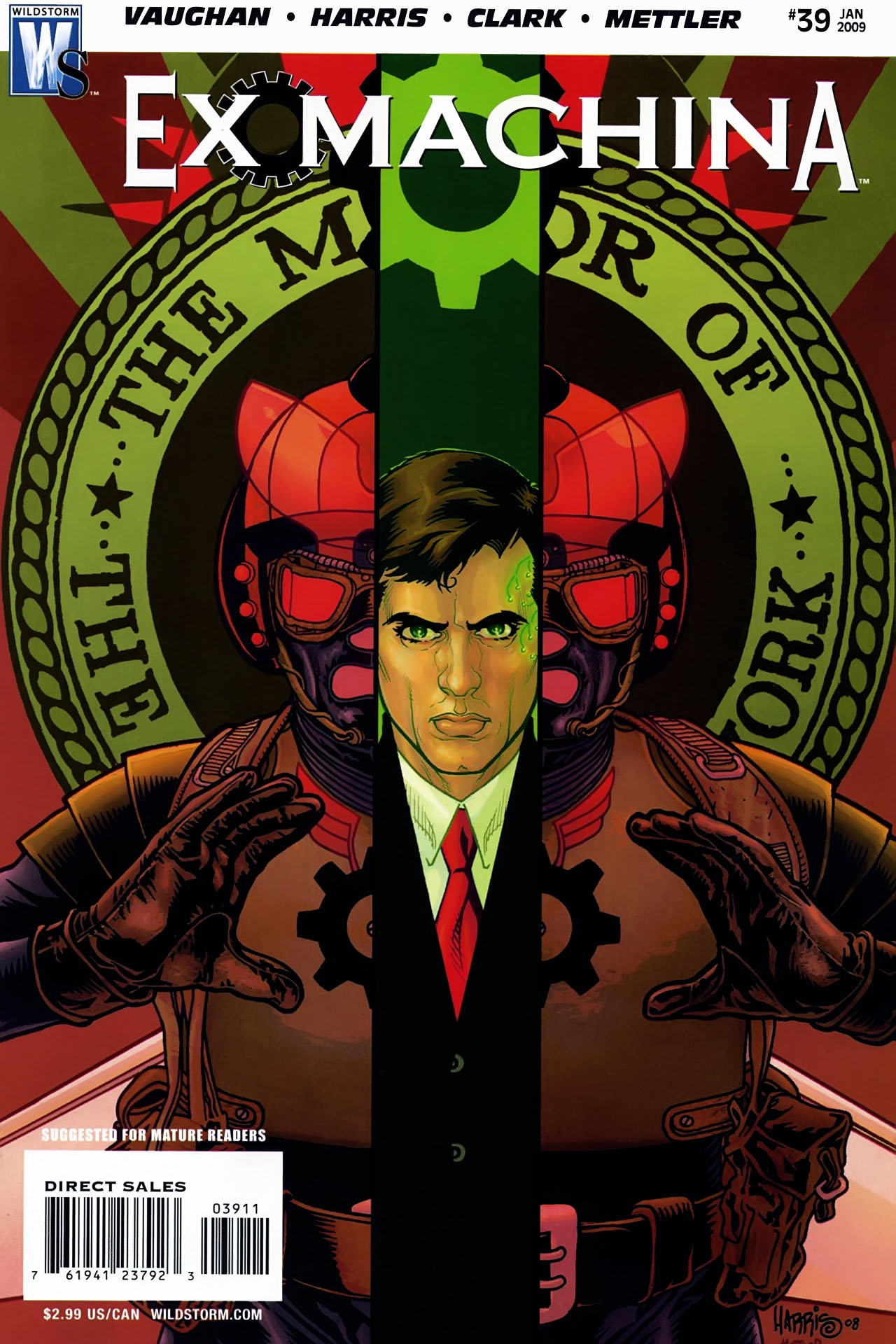
Ex Machina
Ex Machina is in some ways a perfect comic book. It was both timely, coming off 9/11 in a way that was used perfectly within the story, and timeless, delivering a superhero story effortlessly blended with the ups and downs of politics. It’s a tight 50 issues from the same creative team the whole time, as Brian K. Vaughan and Tony Harris slay on each and every issue. And it has both an A+ first chapter and one of the best conclusions of any long-running series this century. It is remarkable.
It’s also a fascinating comic to look back on, as Vaughan was really onto something with series lead Mitchell Hundred. Formerly The Great Machine, the world’s one and only superhero and the person who saved one of the two towers on 9/11, Hundred cashes in on his notoriety by becoming Mayor of New York in the wake of that act. Now, I don’t want to get into spoiler territory, but Hundred’s final fate reveals him as more of a specific type of politician than the one we thought he was, and while the one he was meant to reflect still fits, who he mirrors has evolved as the years have gone by if you know what I mean.
But the core idea of superhero flashbacks baked into an almost The West Wing like present was a smart one, with those two overlapping to an increasingly significant degree throughout. Vaughan and Harris crafted something outstanding here, and while it doesn’t get the rep of BKV’s other works like Y the Last Man and Saga, I’d say it’s certainly in the ballpark of them even if it’s slept on quite often.
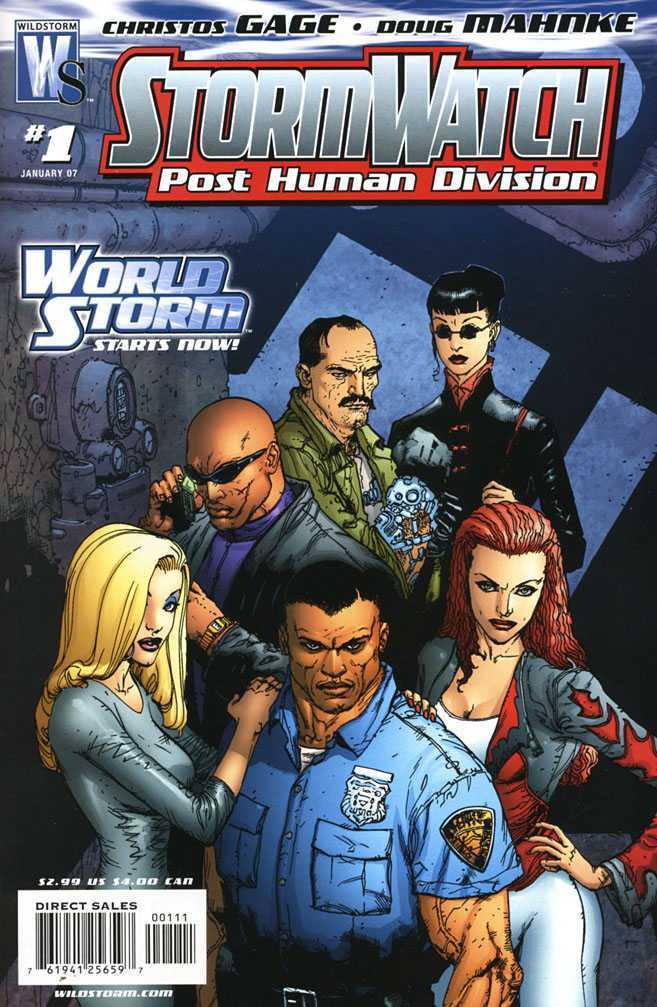
Stormwatch P.H.D.
This is not my favorite version of Stormwatch.
That award is given to Warren Ellis and Tom Raney’s work on the first volume of the series that eventually leads to The Authority. But because Ellis already gets a ton of rep on this list and because The Authority is featured itself, I wanted to highlight a volume of Stormwatch that was slept on but actually quite good: Stormwatch Post Human Division, or P.H.D. for short.
Now, here’s where I cheat within a cheat. While I like more than just these issues – the first volume is generally good – the only undeniably great stretch for this title were the first seven entries to the series, as writer Christos Gage and artist Doug Mahnke combined to reintroduce the Stormwatch concept but fused with a procedural cop show feel. It resurrects characters killed by those dastardly xenomorphs, and for those those seven issues, this comic was a straight killer. Gage reinvents the Stormwatch idea brilliantly, making them a crisis response team that has more of a street level feel. He does a heck of a job here.
But Mahnke is the real revelation. The artist is someone I already loved from the hidden gem series he did with writer John Arcudi, Major Bummer, but this felt like a moment where he further unveiled himself as one of the best artists in the business. A gifted storyteller with a versatile skillset, Mahnke delivered the procedural beats and the superhero scale ones with equal ability, helped ground the book while making it soar when it needed to. Stormwatch P.H.D. isn’t a book you’ll see on most “best of Wildstorm” lists, but the good news is, this isn’t that. But it is a worthwhile title, and one that often goes forgotten from the imprint’s stellar history.
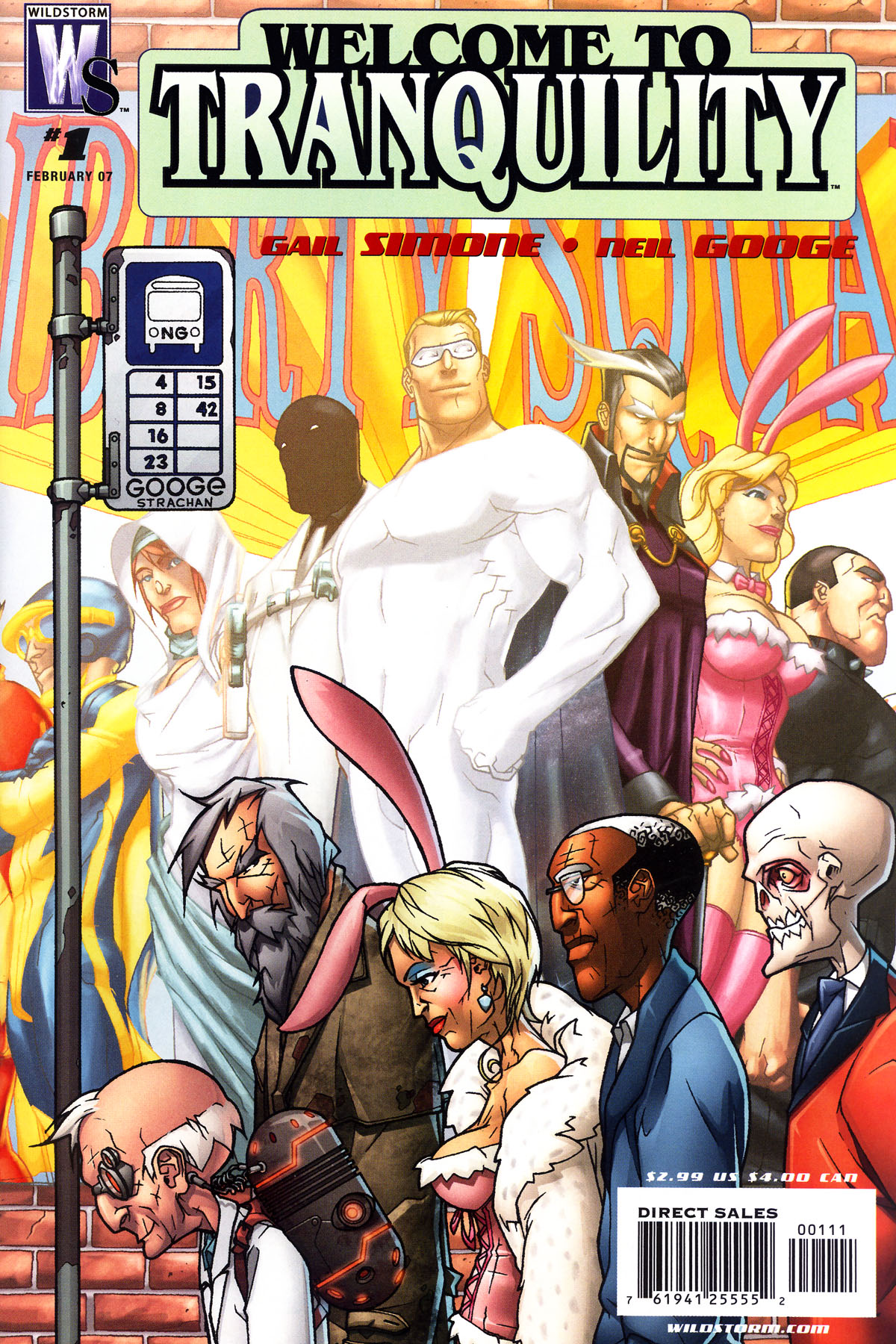
Welcome to Tranquility
Besides the next title, I’d wager that Welcome to Tranquility was the least read book of everything on this list. It was at a relative nadir in popularity for the line, and it doesn’t have the hottest idea in all the land. But that idea, in actuality, was an awful lot of fun.
This comic was about Tranquility, Oregon, a fictional township that doubles as a retirement community for heroes and villains. The first 12 issue story came from writer Gail Simone and artist Neil Googe, and it was largely centered around a murder mystery. But really, it was just a mechanic for Simone and Googe to riff on the ideas of superheroes from throughout time. It actually shares markings with Planetary, but instead of mystery and adventure, this comic was built for humor. And my word, did it deliver, as Simone was spitting fire throughout with an able partner in Googe, whose cartooning was on point throughout.
While I can’t recommend the stories to follow in this series – I bounced once Googe did, as he became the artistic voice of this world for me – that first 12 issue span was an underrated gem that far too many slept on. It’s a very fun comic that plays with the idea of superheroes in a new way, and it’s filled to the brim with memorable characters. Well worth a read if you missed it when it originally dropped, which I imagine is…well, a lot of you.

North 40
Is this one of the ten best Wildstorm comics ever made? Definitely not. Was it one of the most influential or notable releases? I highly doubt it, as this was one of three titles on the list that I doubt most readers of this piece ever actually read. 8 There are plenty of other titles I could include here, including any number of creator-owned titles like A god Somewhere or Astro City, one of the Cliffhanger books like Steampunk or Crimson, or even Wildstorm proper offerings like the very underrated Mr. Majestic run Joe Casey, Brian Holguin and Ed McGuinness put together. Instead, North 40 gets the spot, and that’s for one reason.
It’s the first place I ever took notice of Fiona Staples’ art.
While I had read a series with her work in The Secret History of The Authority: Jack Hawksmoor, a six issue mini-series she did with writer Mike Costa that features Hawksmoor fighting a massive villain as the city of Tokyo, 9 North 40 was the moment where Staples first took a step towards becoming the artist she is on Saga. It just felt different, and I knew even as I read it that this was someone to watch. I only bought the first issue for her art. Heck, I only bought every issue for her art. But then and there, I knew that this was someone of note. 10
The comic itself was one I remembered as a fun one. It’s basically a rural township squaring off against a Cthulhu monster after things start getting crazy and everyone starts developing odd powers. But the main reason I remember it was for making me really pay attention to Staples’ art. It makes the list for that reason.

The Wild Storm
The most recent title and the third entry – or fourth, depending on how generously you want to count WildC.A.T.s/Aliens – in this list from Warren Ellis is DC’s 24 issue reboot of the Wildstorm universe in a single title from Ellis and artist Jon Davis-Hunt. This was a big unknown in terms of how it would work, as Ellis had already restarted the Wildstorm universe once effectively and Davis-Hunt had never done a book like this before. I was hopeful but guarded when this was first announced.
I didn’t need to be, because it was hot fire.
Bizarrely, if you want one comic to read that will best give you a feel for what made Wildstorm as a universe special, this might be it. It’s 24 issues and out. 11 Everyone who is in this comic is reintroduced. It’s tremendously crafted. It’s mostly reinvented, with a greater focus on the spycraft side of the universe here, really emphasizing the C in WildC.A.T.s 12 in the process. It’s easy to jump into and has a very satisfying arc, as it explores the war between International Operations and Skywatch, the two dominant organizations from the Wildstorm universe, while working in a ton of characters from the history of the book.
Would it be better with some experience with the rest of the universe? 100%. But it’s still a great comic, even if it never ends up building off all the setup Ellis and Davis-Hunt put together here. It’s worth it just to see what Davis-Hunt does here too, as the guy was a long-time Wildstorm fan who got the chance to let it fly and boy did he, as he delivered visuals that felt like they were absolutely him and also touching on the roots of the universe at the same time, particularly Frank Quitely and Bryan Hitch’s contributions.
This is a great comic, and it’s Wildstorm to the max. It’s no wonder I loved it so much.
More on him later.↩
This is no slander to Grifter, who was and is my guy to this day.↩
Don’t google that.↩
This series had such good art DAVE JOHNSON WAS AN INKER ON IT. My god!↩
When I say “widely,” I mean not just for me.↩
At least on a larger scale.↩
I know it expanded from there, but that’s where it started.↩
Along with Stormwatch P.H.D. and Welcome to Tranquility.↩
I mean that literally. Hawksmoor, who is powered by cities, put himself within the city and became a gigantic version of himself using the actual city of Tokyo. It was wild.↩
She was nominated for an Eisner for her work here too, even if most people were like “who is that person?” when they saw her name on the list. They knew her name soon enough!↩
Especially given that plans for an expanded universe seem to have been aborted post the WildC.A.T.s mini-series flameout.↩
It stands for “covert.”↩
